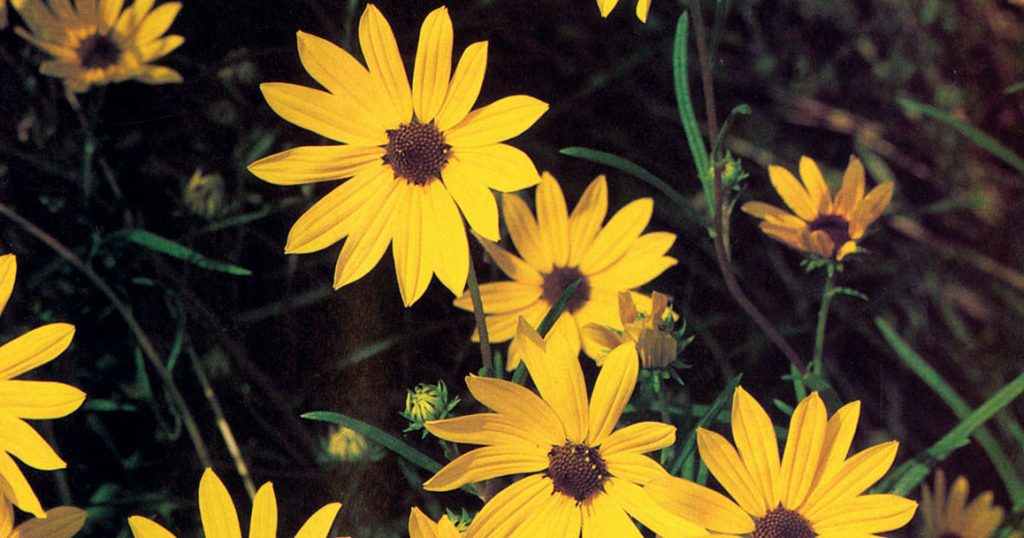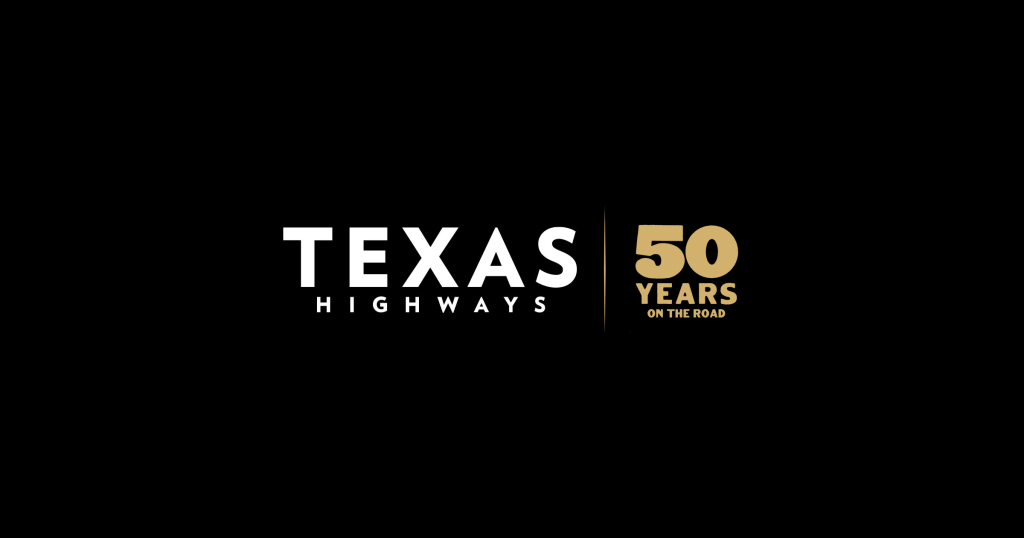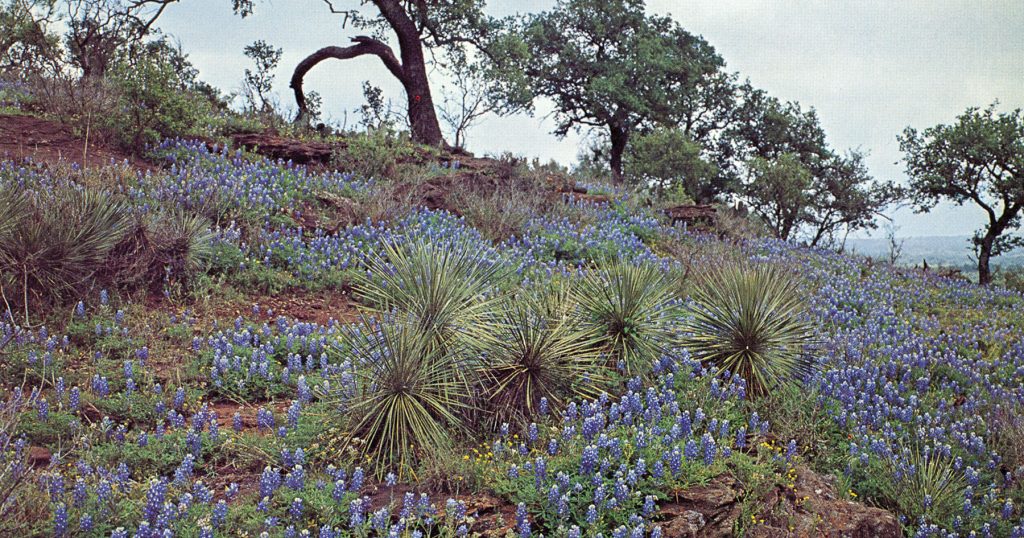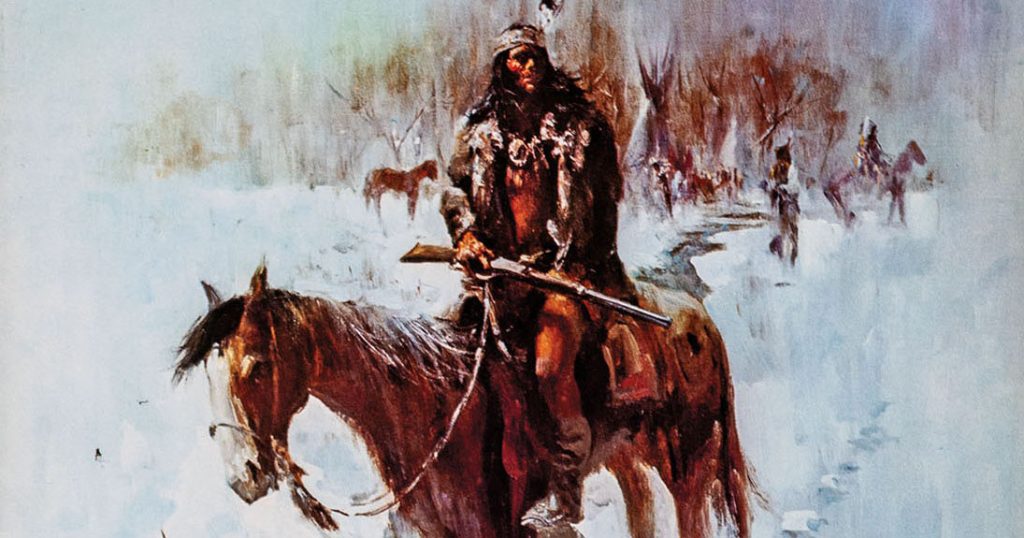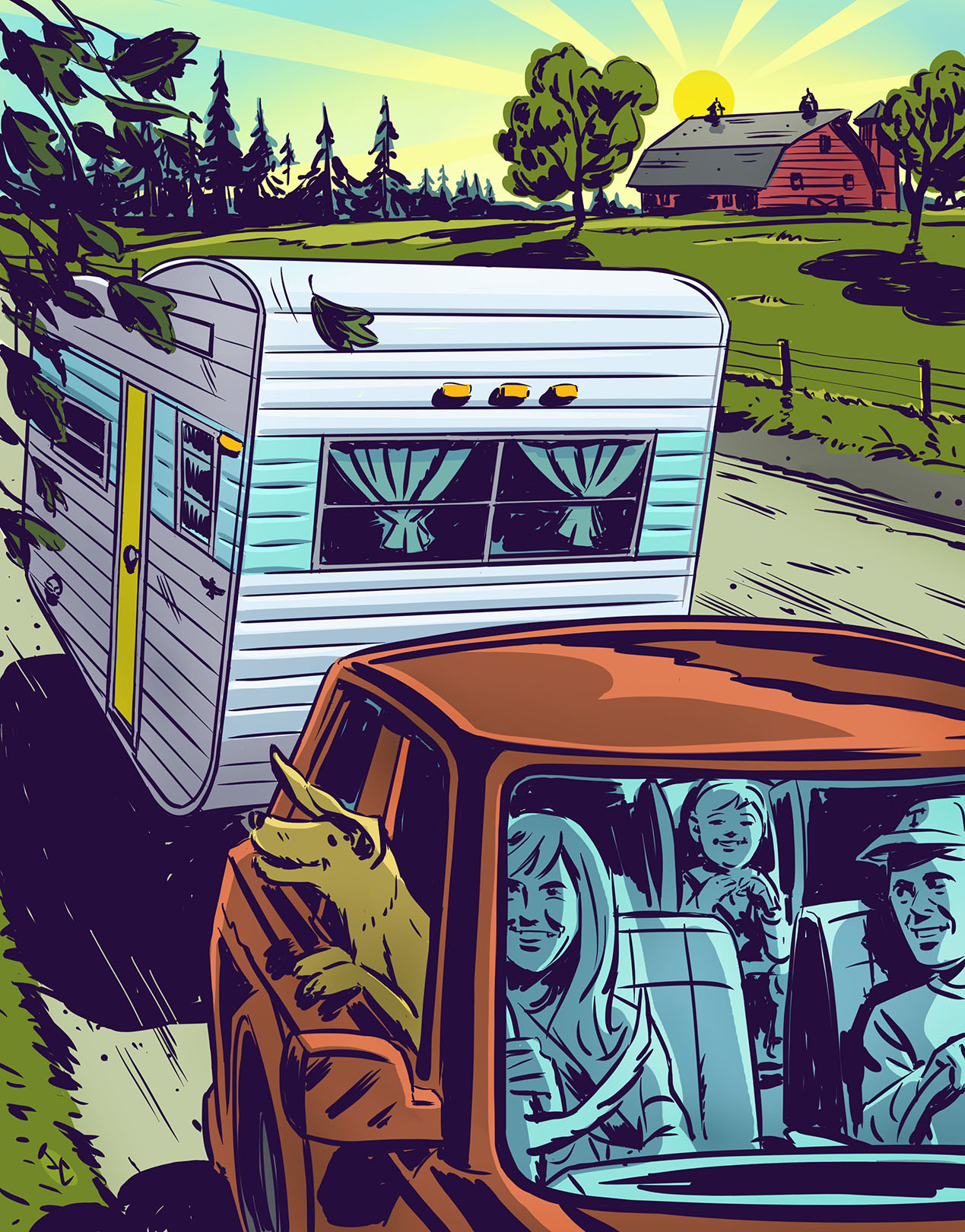
At Home on the Road
The pandemic inspires a new mom and dad to embrace RV life
By Lara Prescott
“She’s perfect,” I told my husband, Matt, when he first showed me the listing in August. A few days later, she was in my driveway in Austin: a 16-foot, 1967 Yellowstone Cavalier travel trailer with white metal panel-ing and a thick gold stripe that reminded me of the West Texas landscape. She was a beaut. I imagined her as a time capsule from a bygone era, parked majestically by the Grand Canyon, or perched on the shores of Port Aransas, or nestled deep in the Great Smoky Mountains. Her original features were intact: the American eagle emblem next to the door, Formica table that converted into a bed, olive-green gas stove, propane refrigerator, and original heat lamp. An old promotional brochure I found online marketed the Cavalier as Tops for traveling! I was sold.
The RV had been restored by two entrepreneurial young men out of San Antonio with serious carpentry skills and marketing acumen. They tore out the bathroom, built a long bench that slides out into another bed, put on a new roof, fixed a water-damaged wall, gave the interior a fresh coat of white paint, and made sure the water and electricity were in working order. Over the old vinyl floor, they installed 100-year-old pine boards, apparently salvaged from a home owned by famed San Antonio architect Atlee Ayres.
They listed the Cavalier with staged photos that would appeal to the Instagram set, complete with a felt letterboard sign that read Awaken Your Soul’s Adventure. The sign was corny; the rest was exactly what we needed. After handing over a check, the men unhitched the Cavalier from their white Ford F-150, and just like that, we were RV people.
Our kind have existed since the early 1900s. In 1915, the Conklin family of Huntington, New York, set off for San Francisco in one of the first known motorhomes. The custom-built, 25-foot, 8-ton vehicle was equipped with a generator, full kitchen, phonograph, pull-down bunks, and even a rooftop garden. The cross-country trip garnered national media attention, and soon, this unique home-on-wheels became a trend. By the 1920s, the simplified tent trailer was the popular choice, as more and more people set out to see the country. In the 1930s, the tent trailer evolved into the “covered wagon,” which had the signature boxy look of an RV. Nowadays, there seems to be an RV that suits anyone’s tastes and needs, including motorhomes, campervans, caravans, fifth-wheel trailers, pop-up campers, and truck campers.
Before that moment in our driveway, we didn’t know we were RV people. While I love to travel, if given the choice between a campsite and a nice hotel room, I’d go with the nice hotel room 99% of the time. Matt and I had to cut our last camping trip short because I couldn’t sleep in the tent. If you would have asked me a year ago if I was in the market for a vintage camper to drive across the country because it was the safest way to travel during a global pandemic—well, you get the point. The world had changed. We had changed.
Back in February, a few weeks before the country shut down, we adopted our newborn son, James. The plan was for our parents, siblings, aunts, uncles, and close friends to fly to Austin and see the newest addition to the Prescott clan. They’d take him on walks so we could rest. They’d pick up around the house. They’d make us soups and lasagnas to freeze. And they’d dote on little James, introducing him to his large, loving network of friends and family.
Instead, he spent the first nine months of his life in lockdown. Other than a few hours spent each day at the home of our neighbors, Jaelene and Jeff, and visits here and there with a few friends in our quarantine pod, it was just the three of us. Which was fine, for a while. But James quickly began to grow and engage more with the world around him, becoming curious and cuddly and increasingly social. We decided that if he was to spend time with that big, loving family thousands of miles of away, we needed a Plan B.
Flying was out of the question. As for a road trip, the idea of a hotel—let alone several of them—didn’t exactly seem safe. How could we change diapers in the back of our packed Toyota RAV4? And what if James hated being in the car? The longest we’d driven him up to that point had been 15 minutes to his pediatrician appointments. What if he freaked out, then we freaked out, then we were parked on the side of the road somewhere, all freaking out together in a cramped car?
There were enough “what ifs” to put off our plans. But, as time wore on and it became clear the world wasn’t going back to normal anytime soon, Matt proposed renting or buying an RV to drive to our families in Pennsylvania and Maine. We could camp along the way, make and eat all our meals in the camper, not come into contact with many people, and also be able to pull off at rest stops to feed and change the baby in comfort.
I liked the idea of bringing our little bubble on the road—our pod traveling inside a pod—so Matt set off to research RVs. Unfortunately, we weren’t the only ones with this plan. According to the Recreational Vehicle Industry Association, North American RV sales rose 4.5% in 2020, likely due to the pandemic. And Outdoorsy, the online RV rental market-place, saw a significant increase in bookings from the prior year. Skeptical about flying, travelers were setting out on the open road.
There is something undeniably American about a cross-country road trip. In the 1920s, F. Scott Fitzgerald and his wife, Zelda, drove a 1918 Marmon dubbed the “Rolling Junk” 1,200 miles from New York to Zelda’s Alabama hometown to have a breakfast of biscuits and peaches. Jack Kerouac crisscrossed the country in the 1940s, seeking thrills, jazz, and an alternative way of life. John Steinbeck set out with his standard poodle, Charley, to discover America in 1962. And the list goes on.
I love the romance of an adventure on the open road. Some of my fondest memories in my marriage have been on road trips. The time we drove to Yellow-stone and got caught in a freak snow-storm at the top of a mountain. Or the time we drove through Minnesota and the police stopped us for taking a late-night photo of the “World’s Largest Otter.” Or the time we drove to South Padre Island to see the baby sea turtles hatch and make their way to the ocean. We love being on the road, where you can discover new places you’d miss if you only flew over them. We even drove 3,000 miles across South Africa for our honeymoon.
But the idea of a road trip with a baby on board was daunting. I wasn’t sure we were up for the monumental task. Matt and I had always talked about the importance of having James experience the joy of traveling to a new place, meeting new people, and experiencing new cultures. We just weren’t planning on doing it before he could walk.
But it was too late for me to change my mind; Matt had found the ’67 Cavalier. After we bought her, there was still the small matter of how to pull her. Our poor RAV4 just wasn’t up for the job. So, off to the dreaded used car lot we went, where we upgraded to a BMW X5 that could haul 2,800 pounds of metal and wood.
To make the Cavalier road-trip ready, we added solar panels (so we could have electricity without having to find power outlets at rest stops) and a rooftop air conditioner (this is Texas after all). We installed a new suspension and tires. We added new brake lines and repaired some electrical issues. Matt even conjured some of the minimal skills he’d learned in a welding class several years earlier to take an angle grinder to the Cavalier’s rusty frame. And finally, we slapped a fresh coat of paint on her—turning the faded and chipped gold stripe a turquoise blue and making the door canary yellow to give it a midcentury flair.
Matt and I had always talked about the importance of having James experience the joy of traveling to a new place, meeting new people, and experiencing new cultures. We just weren’t planning on doing it before he could walk.
When we were done, we took her out for an inaugural spin around our neighborhood. Baby on board, we drove to an empty church parking lot to practice turning, parking, and—yikes—backing up. If you want to back up to the right, you need to turn the wheel to the left, which felt a little like trying to pat your head and rub your stomach at the same time. We flinched at every sound and sway.
“Is that normal?” I kept asking.
“Who knows?” Matt replied.
How could we possibly think about going cross-county when driving around our neighborhood made us nervous? I decided we needed more practice.
Our first real test drive was to McKinney Falls State Park in Austin, home to soaring bald cypress trees, blue-green water-falls spilling over smooth limestone rocks, and the ruins of an old Texas homestead. We set out one warm afternoon in October, driving the 20 or so minutes to the park, weaving our way through traffic and several construction zones. With Matt white-knuckled behind the wheel, I made light of people cutting us off. I looked back at our drooling, carsick dog, Mo, sitting next to the baby in his car seat. “Almost there,” I said.
We pulled into our campsite around 4 p.m. By the time we plugged into the electricity, popped up James’ play tent, unfolded the collapsible camping chairs, and put out a bowl of water for Mo, the sky was already beginning to darken.
James started to fuss and Mo was restless, so we walked the campsite loop. It seemed we weren’t the only ones with the idea to camp. Every site bore the same sign: “Reserved.” A family was setting up their picnic table for dinner with a red and white checkered tablecloth, real plates, and a mason jar full of flowers. A young couple was reading in matching nylon hammocks strung from pecan trees. An older hippie-type in colorful balloon pants waved at us from his portable rocking chair.
How could we possibly think about going cross-county when driving around our neighborhood made us nervous?
We took stock of how our little camper compared with the Thor Freedoms, American Coaches, Keystone Raptors, and Winnebago Sunstars. Sure, we didn’t have the large flatscreen TVs, the king-size beds, the full-size bathrooms (or any bathroom, for that matter), but ours suited us just fine.
Back in the camper, James leaned against some propped-up pillows on the folded-down bed and played with our dangling car keys as he drank his bottle. After he finished, I read him a few books until he squirmed away. He wanted to explore our new tiny space—stick his tiny fingers in everything, stand up on the pillows and look outside the window, pull on the homemade curtains, toy with our face masks hanging from a hook by the door, crawl and cruise the approximately four feet of walking space, and open and close the cabinets. When he’d thoroughly explored his new digs, he whined as if to say, Is that it?
It was nearing his bedtime, which brought to light a problem: If he goes to bed around 6:30, what do we do after that without waking him? We decided to put him to bed in the Pack ‘n’ Play crib wedged between the two single beds and cook and eat our dinner outside. After changing him into his pajamas, we set him in the crib, put the monitor on, and closed the door. I expected the worst: for him to start crying and not stop. But after a few whimpers, he settled down and went to sleep. “What a camping champ,” I told Matt.
We brought out some wine, s’mores fixings, and Yahtzee to play on the picnic table. We cooked dehydrated vegan chili on our portable stove and poured two metal mugs of red wine. The food tasted great, the way it always seems to when you cook it outside over a flame. But our night relaxing beneath the stars was cut short. Those damn Texas mosquitoes that linger well into November had descended. After slapping a bloody mosquito off my calf, I downed the rest of my wine, rinsed our plates under the spigot, and shoved an untoasted s’more in my mouth.
We snuck back into the camper and watched the presidential debate on an iPad with split earphones and Mo at our feet. Through it all, James didn’t stir. The campground had quieted. I began to doze off. Matt checked the clock and said it was only 8:30. I reminded him that on camp time, you sleep when it’s dark and wake when it’s light. I quickly fell asleep, awoken only briefly by Mo, and then permanently when the baby stirred around 5:30 a.m.
We changed James and fed him. After some oatmeal and two cups of instant coffee, we set out for home with the sun rising and a faint moon still hanging in the air. We learned a lot from that test trip. We needed better bedding but fewer pillows, bungee cords for securing items, and plenty of bags for diapers. We also learned that James was suited for adventure. I just hoped he’d feel the same way when we were thousands of miles from home.
A few weeks later, we’d created an itinerary and booked our campsites. Then, the day after the election, we set out on our adventure: first to Pennsylvania to see my family, and then to Maine so James could spend time with his grandparents, Aunt Hillary, and his new cousin Ella.
The Texas skies were cloudless and the weather warm for November. Our first drive of the trip was the shortest—five and a half hours from Austin to Texarkana. We made it in seven, including stops, with no baby meltdowns. Our destination for the night was the Texarkana KOA campsite in a patch of woods behind an IHOP.
After we set up camp, I took James for a walk around the grounds. We passed the empty swimming pool, the surprisingly clean bathrooms, the small dog park, and a playground right out of my childhood, with a metal slide and a seesaw.
Only a few RVs were parked in the spots reserved for people just spending a night or two. People waved at us as we passed by, as if we were neighbors. After having spent months in isolation, my heartfelt full seeing these new, friendly faces. The pandemic often made me feel trapped, but out on the road I finally felt a sense of freedom that I think everyone at the campsite must’ve been feeling.
Deeper into the grounds were the sites people rented out for longer periods of time. Some had gardens behind tiny white picket fences, while others stretched out with decks built off their RVs. One tenant flew a Texas flag big enough to cover our entire camper and car together. A Chihuahua gave us the evil eye, saving his high-pitched bark for when we’d passed by.
As we settled in for the night at the campsite—1,700 miles to go until Maine—we listened to the drone of traffic from the nearby highway, James in the portable crib between us. It wasn’t a nice hotel room like I might’ve preferred in the past. It was better. We were out in the world, free from the constraints of home but also armed with its comforts.
What comes next, I won’t get into. I won’t say how the trip back from Maine was horrendous, or that we ran into a snowstorm in Ohio, or that we couldn’t make it to the campsite in Arkansas because of a rainstorm and had to stay in a hotel. I won’t give the details on the many diaper blowouts and crying fits, or how James caught his first cold and was teething at the same time, and how everything seemed to go wrong at once.
At that moment, in our little RV at that campsite in Texarkana, everything in the world felt right for the first time in a long time. It was just the three of us and the prospect of the open road ahead. After an arduous year, we were at the beginning of a long journey—the first, I hoped, of many such adventures for our son, James. We were on our way.
